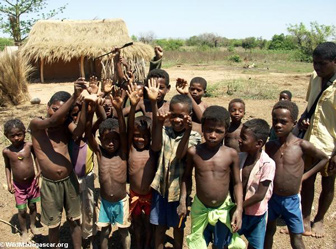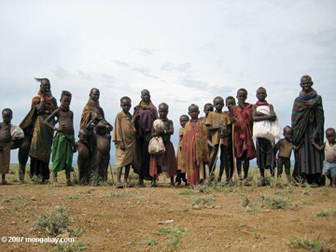80% of world’s undernourished children live in 10% of countries
80% of world’s undernourished children live in 10% of countries
Morgan Erickson-Davis, mongabay.com
January 17, 2008
Drastic change necessary in the fight against child undernutrition
Worldwide, undernutrition is responsible for more than a third of all deaths of children under the age of five. If a child survives past this age, he or she is much more likely than a child adequately nourished to demonstrate lower educational achievement, be of below-average height, and give birth to smaller infants.
Eighty percent of the world’s undernourished children live in just ten percent of its countries. Recent research conducted by the Maternal and Child Undernutrition Study Group exposes some of the ineffectual methods currently being used to improved child and maternal undernutrition in the 20 worst-effected countries, along with providing a plausible framework for addressing and correcting the underlying problems.
Many first-world countries have enacted broad diet policies which have drastically improved the nutrition of their citizens: the UK, upon recognizing the severe malnutrition affecting most of its population in 1936, implemented sweeping nutritional reforms. The US began fortifying flour more than 60 years ago in response to growing concern over nutritional gaps in the diets of many Americans.

|
In the fourth of a series of five papers, Dr. Jennifer Bryce and colleagues underline the importance of co-responsibility among the national and international nutrition systems functioning in third-world countries. The international system implements guidelines via “poverty reduction strategy papers” (PRSPs) which serve as foundations for domestic policies and programs concerning the reduction of poverty. As of September, 2006, 16 of the 20 worst-affected countries had implemented PRSPs. Thirteen of the 16 were found to actually address nutrition, with only eight having a positive affect on national nutrition or food policies. Many nationally-governed nutrition systems have criticized the PRSPs, claiming a lack of clear priorities and insensitivity to local political realities and timetables. Bryce et al. also report that, in terms of the nationally-guided nutrition system, proven effective strategies for combatting maternal and child undernutrition are not universally promoted, nor even widely measured or monitored.

Changes in precipitation could cause problems for the nomadic Turkana people in Kenya. Migration into Sudan and other parts of Kenya could well produce conflict over resources with other ethnic groups. |
The Maternal and Child Undernutrition Study Group calls for a more functional international nutritional system which exhibits more local awareness and which can more effectively support national endeavors. In turn, the national system should increase the scale of its effective programs and give priority to pregnant women and children younger than two years of age.
An example of successful cooperative function on both the national and international level is Oportunudades of Mexico, where a combined method featuring fortified weaning supplements, nutritional counseling, and conditional cash transfers resulted in an overall 20% reduction in anemia rates, along with an over one centimeter increase in the height of infants who used the program during the first two years of life.
The Maternal and Child Undernutrition Study Group reports that, if implemented cooperatively and universally, the national and international nutrition systems could reduce by 25% the rate of undernutrition of young children in the 36 most highly affected countries.














